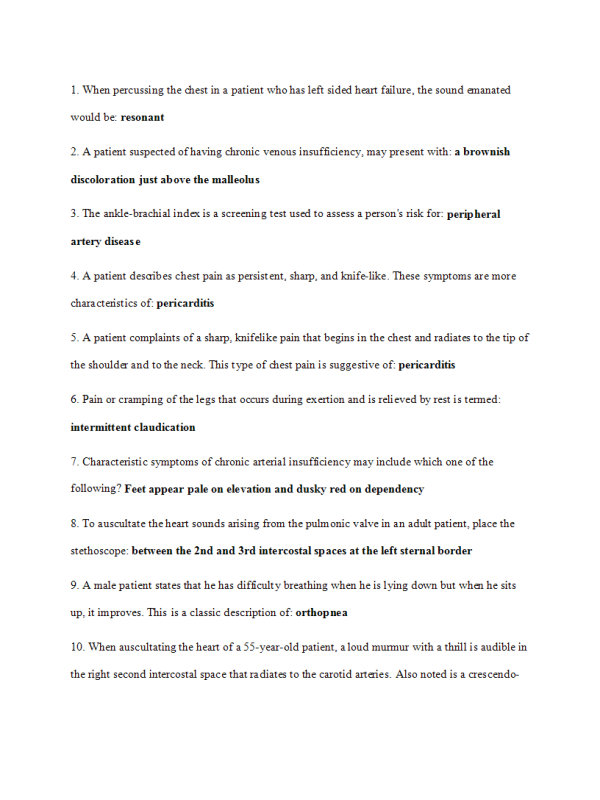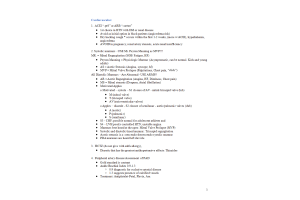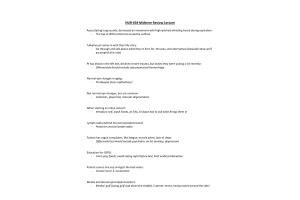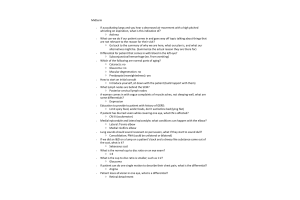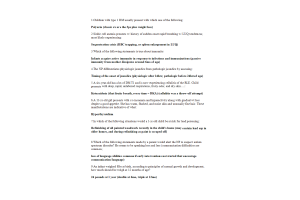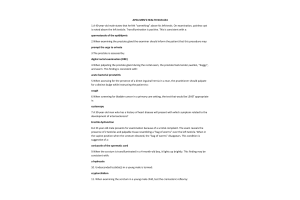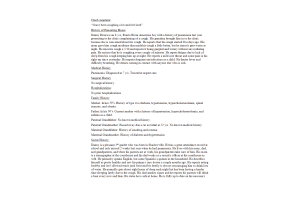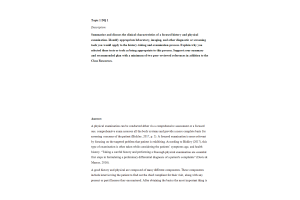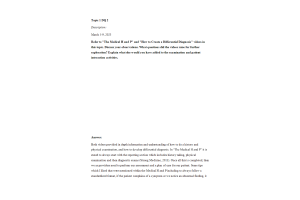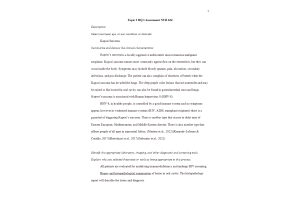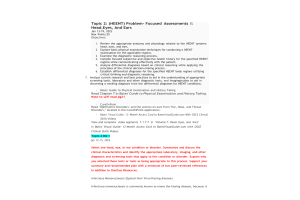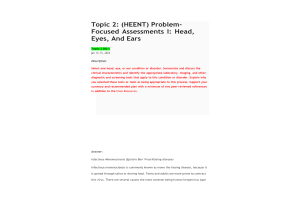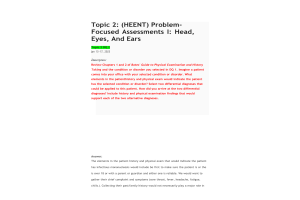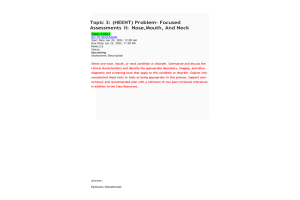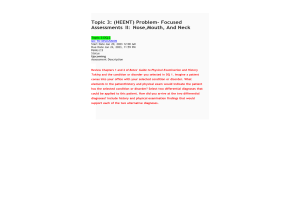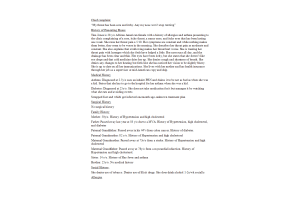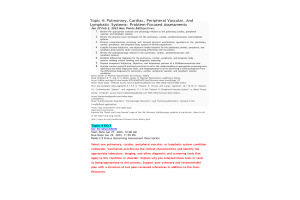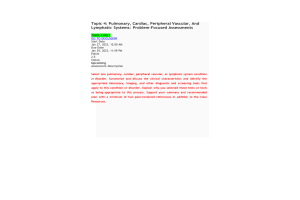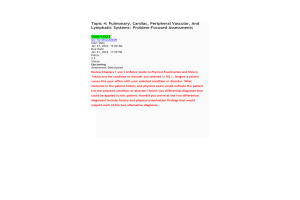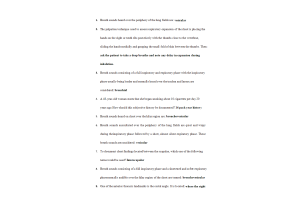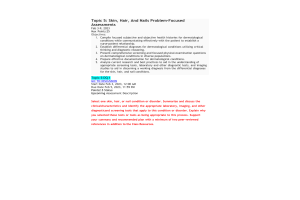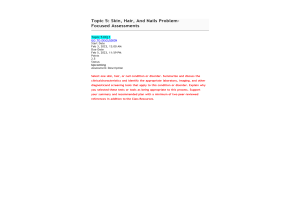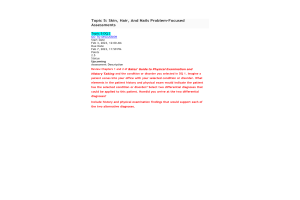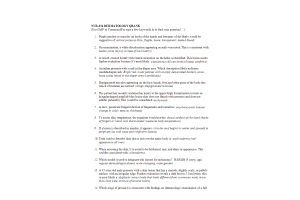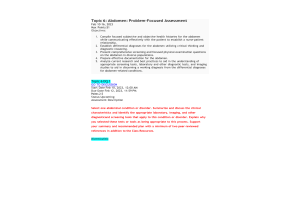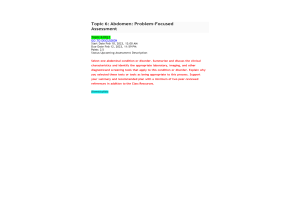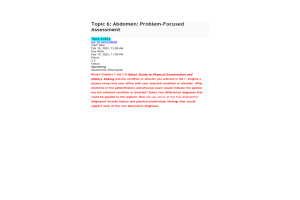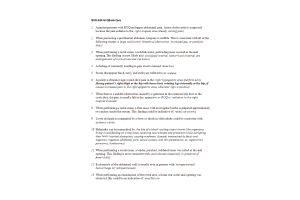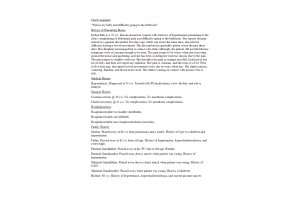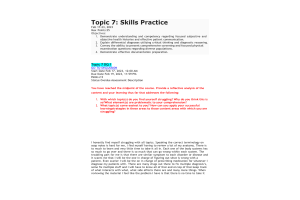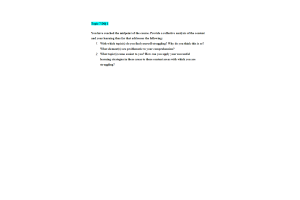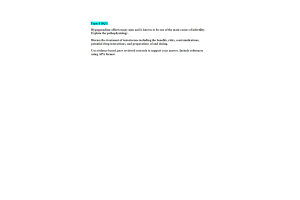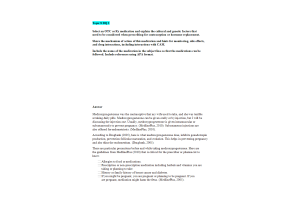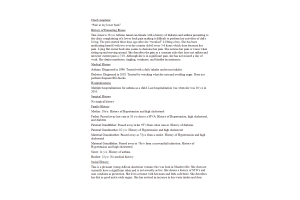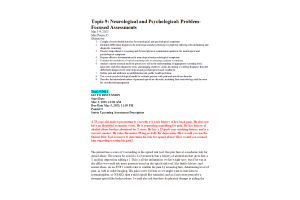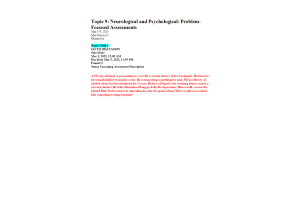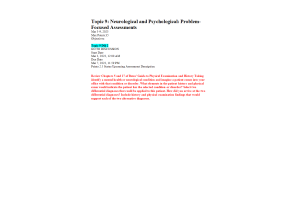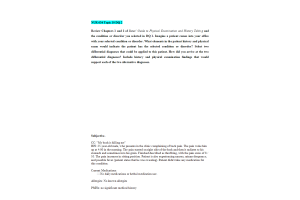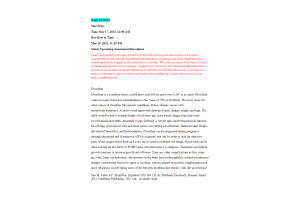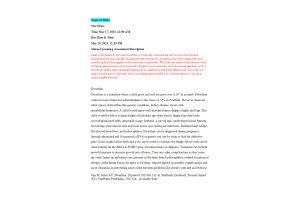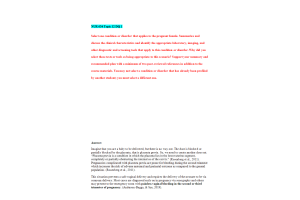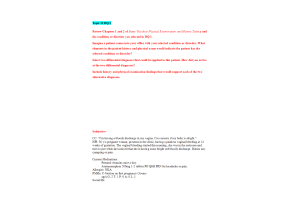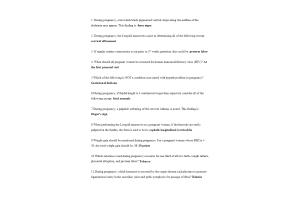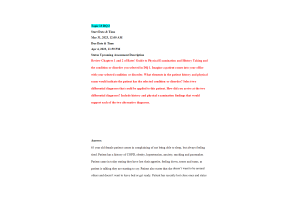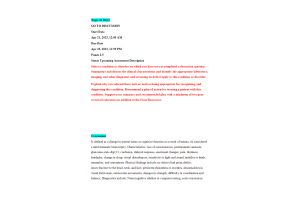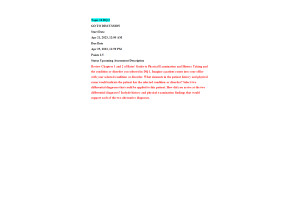NUR 634 Topic 4 MyQBank Assignment; Cardiovascular (CV)
- $45.00
1. When percussing the chest in a patient who has left sided heart failure, the sound emanated would be:
2. A patient suspected of having chronic venous insufficiency, may present with:
3. The ankle-brachial index is a screening test used to assess a person's risk for:
4. A patient describes chest pain as persistent, sharp, and knife-like. These symptoms are more characteristics of:
5. A patient complaints of a sharp, knifelike pain that begins in the chest and radiates to the tip of the shoulder and to the neck. This type of chest pain is suggestive of:
6. Pain or cramping of the legs that occurs during exertion and is relieved by rest is termed:
7. Characteristic symptoms of chronic arterial insufficiency may include which one of the following?
8. To auscultate the heart sounds arising from the pulmonic valve in an adult patient, place the stethoscope:
9. A male patient states that he has difficulty breathing when he is lying down but when he sits up, it improves. This is a classic description of:
10. When auscultating the heart of a 55-year-old patient, a loud murmur with a thrill is audible in the right second intercostal space that radiates to the carotid arteries. Also noted is a crescendo-decrescendo pitch audible at the apex. The murmur is heart best with the patient sitting and leaning forward. This finding is consistent with:
11. The patient has had an internal pacemaker in place for five years. Pacemaker failure is being considered because over the past few days, the patient has been experiencing episodes of:
12. When auscultating the heart, a scratchy, continuous murmur is audible during atrial systole and ventricular systole and diastole. This finding may be indicative of a:
13. In order to bring the ventricular apex closer to the chest wall when assessing the point of maximal impulse (PMI), ask the patient to:
14. By placing the ball of the examiner’s hand firmly on the chest, the examiner would be checking for:
15. Widened pulse pressure (PP) is defined as systolic blood pressure (SBP):
16. When auscultating heart sounds arising from the aortic valve in an adult patient, place the stethoscope:
17. A disparity between the brachial and femoral pulses in a 4-month-old could include:
18. When auscultating the apex of the heart in an 8-year-old, the bell of the stethoscope should be placed at the:
19. Men between the ages of 40 and 64 years should be screened yearly for:
20. While auscultating the patient’s heart, a medium, soft murmur is audible. It is pansystolic and heart loudest at the apex with radiation to the left axilla. These findings are consistent with:
21. When performing a cardiovascular assessment on a healthy 2-year-old child:
22. A patient complains of pain in the arch of the foot sometimes relieved by rest. Occasionally, he experiences intermittent pain in the toes, especially at rest. Exercise aggravates the pain in the arch. History reveals he smokes approximately a half pack of cigarettes per day. These symptoms may be consistent with:
23. Right atrial pressure can be determined by:
24. To auscultate the tricuspid valve heart sounds in an adult patient, place the stethoscope:
25. When assessing the heart rate of a healthy 13-month-old child, which one of the following sites is the most appropriate for this child?
26. The great saphenous vein enters the deep venous system by way of the:
27. A condition that presents with symptomatic limb ischemia upon exertion is termed:
28. A twelve-month-old has a history of heart failure related to his congenital heart defect. He is receiving Aldactone (Spironolactone), enalapril (Vasotec), furosemide (Lasix), and acetaminophen (Tylenol). The infant’s potassium level is 3.1 mEq/l. Which medication is most likely decreasing his potassium level?
29. A bruit heard in the epigastric area with both systolic and diastolic components is suggestive of:
30. What heart sounds are heard during auscultation of a man with Marfan syndrome who has a known mitral valve prolapse?
31. A patient presents with chest pain that radiates to the left side of the neck and down the left arm when he chops wood. This type of pain could be suggestive of:
32. A patient complains of increased pain in the calf muscles and buttocks especially after walking or riding his bike. He states that the pain stops after he sits down for about 2-3 minutes. This condition may be associated with:
33. A patient describes chest pain as pressing, squeezing, and tight lasting between 1 and 3 minutes. These symptoms are more characteristic of:
34. A disease than may present as indigestion, but is precipitated by exertion and relieved by rest is most likely:
35. In order to assess for varicosities in the lower extremities, position the patient:
36. Absent or diminished pulses in the wrist could be indicative of:
37. A pediatric patient presents with erythema marginatum, chorea, and a heart murmur. These symptoms are consistent with:
38. The hemodynamic changes resulting from structural defects in children can lead to heart failure. The most common reason for these changes is related to:
39. When auscultating the heart for aortic insufficiency, ask the patient to:
40. A widened pulse pressure greater than or equal to 60 in an older patient is a risk factor for cardiovascular disease, stroke and:
41. A third heart sound (S3) is audible in a forty-five-year-old. This S3 sound may be:
42. A heart rate of 100-180 beats per minute in an adult is considered:
43. A patient complains of some pain in the distal portions of her fingers on both hands. She states that it tends to occur more frequently with exposure to cold. These symptoms may be consistent with: Raynaud’s disease 44. The four classic structural defects of Tetralogy of Fallot include:
45. Which of the following symptoms would necessitate the need for further evaluation in the newborn?
46. A sudden, tearing, sharp pain that begins in the chest and radiates to the back or into the neck is usually associated with:
47. Presence of a heart murmur in a child would be considered organic if the child:
48. TO assess the murmur of aortic insufficiency, position the patient:
49. When palpating the carotid pulse, it is important to:
50. Pain with walking or prolonged standing, radiating from the spinal area into the buttocks, thighs, lower legs, or feet may be seen with:
51. When assessing a 3-year-old African American child, the most likely cause of black, dusky mucous membranes is related to:
52. In older adults, the presence of heart sound S4 suggests:
53. In older adults, the presence of heart sound S3 suggests:
54. A three-week-old infant presents with a generalized lacy, reticulated blue discoloration of the skin. This is suggestive of:
55. The amplitude of the pulse in a patient in cardiogenic shock would most likely appear:
56. A patient complains of a tight, bursting pain in the calf that increases with walking. Elevation of the leg sometimes relieves the pain. These symptoms may be consistent with:
57. A characteristic finding in the elderly population is:
58. When screening a patient for peripheral arterial disease (PAD), one risk factor would include a history of:
59. To assess aortic pulsations in patients with carotid obstruction, assess the pulse using the:
60. Causes of orthostatic hypotension in older adults may include all of the following except:
61. A patient with cirrhosis develops portal hypertension as indicated by the presence of:
62. When auscultating the point of maximum impulse (PMI), apex of the heart, in an adult, the stethoscope is placed at the:
63. Symptoms of orthostatic hypotension include all of the following except:
